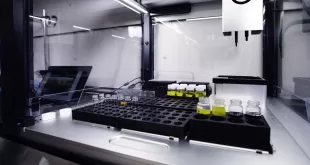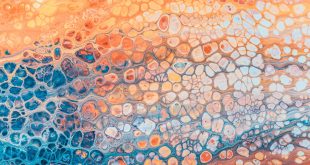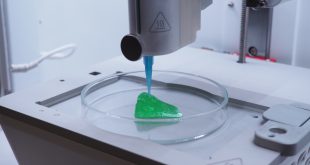By Sumeep Bath, Communications Manager, IISD Experimental Lakes Area
When it comes to breathtaking vistas, seemingly endless open space and pristine lakes bordered by dense forestland, it’s difficult to compete with northwestern Ontario.
It’s little wonder that so many Canadians choose the region to buy holiday homes and cottages, or opt to settle there. Don’t be fooled by its unassuming beauty, however; northwestern Ontario is much more than a scenic destination.
In fact, since the late 1960s, just north of Kenora, a group of 58 remote lakes and their watersheds have performed a vital scientific function, revolutionizing the way we research fresh water. This network of lakes – the International Institute for Sustainable Development Experimental Lakes Area (IISD-ELA) – has provided the setting for numerous groundbreaking discoveries into what affects our water supplies, resulting in rewritten policies regarding water health around the world. There is no other freshwater research facility like it.
Instead of researching the effects of certain pollutants and processes in a laboratory or a test tube, IISD-ELA researchers experiment directly on the lakes themselves, as they exist in nature. With a test tube, isolated factors are observed in an artificial setting, but when a lake is manipulated (for example, by intentionally adding a certain contaminant), the researchers are working with a full ecosystem, and they are able to examine how all aspects of the ecosystem – from the atmosphere to fish populations – respond. We call this “whole-lake experimentation.”
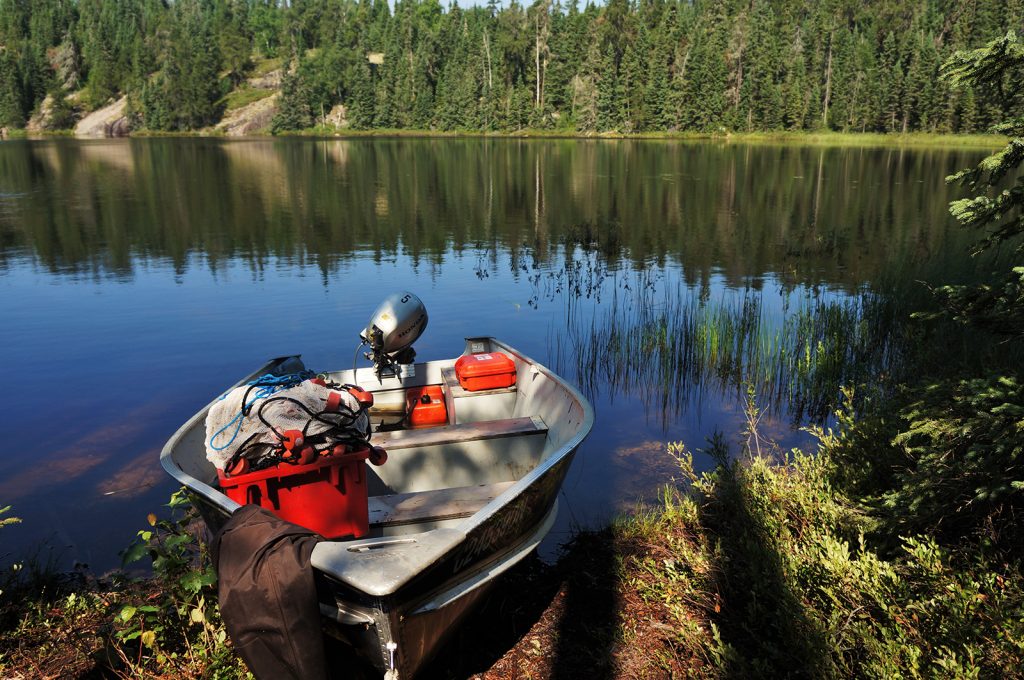
Since its inception in 1968, IISD-ELA is the only place in the world these experiments have been conducted on a long-term scale. The site has been researching new and unstudied threats to our water supplies like no one else can. Take phosphorus, for example; IISD-ELA was the first place to discover that it leads to harmful algal blooms in lakes, which in turn led to countries around the world taking steps to reduce the amount of phosphorus, such as that found in our laundry detergents, entering waterways.
Algal blooms are IISD Experimental Lakes Area’s reason for being – the site was originally set up to determine what was causing them. Compelled to act by the growing prevalence of those smelly layers of green sludge on lakes across North America, a group of plucky Canadian scientists successfully convinced the Government of Canada to set aside a few of Canada’s reported millions of lakes for scientific experimentation. By adding different nutrients (phosphorus, nitrogen and carbon) to isolated sections of a lake, researchers determined that phosphorus is indeed the most important limiting nutrient for algal blooms.
This groundbreaking discovery helped changed water policy around the world. It is thanks to this research that we have better sewage treatment plants, better water quality guidelines and mandated phosphate-free laundry detergents and dish soaps. These policy changes resulted in fewer algal blooms due to “point source pollution” (where nutrients are released directly into a body of water – in this case, from wastewater plants) in lakes such as Lake Erie.
In the 1970s and ’80s, IISD-ELA continued to respond to contemporary threats and concerns about freshwater health, and intentionally acidified a lake over seven years, ultimately proving that acid rain resulted in dramatic impacts on lakes, including the collapse of fish and zooplankton populations.
To this day, researchers continue to introduce different elements of nutrients into the experimental lakes to learn more about why and how algal blooms occur, and what we can do to stop them.
To celebrate its 50th anniversary in 2018, the IISD-ELA team returned to one of the first lakes on which research was conducted to see what else it could teach us about the recovery process from acid rain damage. Researchers are now attempting to recolonize the lake with Mysis (a small but important freshwater shrimp that disappeared completely from the lake during the last experiment) to see if the Mysis population can recover, but also to see if it will restore the lake trout population that depends heavily on Mysis for sustenance. This case study will be used to determine if Mysis recolonization could be a suitable restoration activity for other lakes across the world that have been affected by acid rain.
Despite the progress made, threats to the world’s water supplies have not gone away. And as we start to brace ourselves for the impending impacts of climate change and need to learn about new chemicals and pollutants entering waterways, the IISD Experimental Lakes Area is here to meet those challenges head-on.
Think about oil spills, for example. North America has the largest network of energy pipelines in the world – the Keystone Pipeline, the Dakota Access Pipeline, the Trans-Alaska Pipeline System – and unfortunately, periodic oil spills from pipelines do occur. That’s why a new large project, taking place at the IISD Experimental Lakes Area in three stages, is setting out to learn more about what oil spills do to freshwater systems. A series of secure enclosures have been set up around one of the lakes, and in them, researchers are performing a series of experiments with real crude oil and “dilbit” (the diluted form of bitumen in which oil is often transported in pipelines) to determine, over a number of years, exactly what happens when oil hits fresh water, how the ecosystem responds and what are the most effective forms of clean-up, or “remediation.”
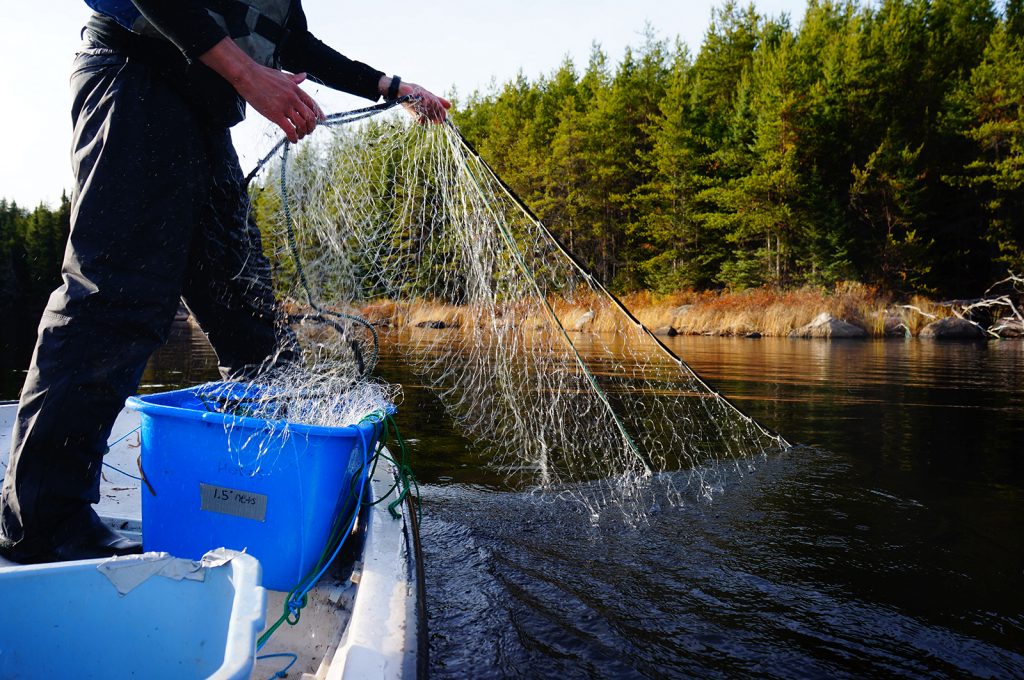
Climate change has been occurring since before the site opened, and before researchers even knew they were studying it. Thanks to the long-term datasets the IISD-ELA has been keeping since 1968 – tracking everything from the temperature of the water to its chemical and physical makeup – we are able to now look back and see the changes to the lakes attributable to climate change. Researchers have found some pretty worrying results; climate change is resulting in less icy lakes, warmer lakes, darker lakes, smaller fish and reduced fish habitats – all of which are having significant impacts on the health of the lakes and those creatures who reside inside them.
IISD-ELA is now embarking on new studies that will explore many of the continually emerging threats to our fresh water. Even cannabis is being considered; since it was legalized for recreational use in Canada last year, there have been many questions about whether usage would increase and how this could affect the environment (including freshwater bodies). New research plans to test how cannabis metabolites that end up in freshwater systems (through excretion from humans) could impact everything in freshwater lakes, from the water chemistry to the health of fish.
Similarly, a person would have to be living under a rock for the last few years to have missed the public outcry about plastics in our waters. IISD launched research this year that involves monitoring the existing levels of plastics already in one of its lakes, then will be adding microplastic particles into the same lake over multiple years to evaluate the impact on all aspects of a freshwater lake.
The next time you turn on the tap or drink a glass of water, take a second to think about how lucky we are to have a such a unique scientific facility studying how to keep our water clean and free of pollutants – and remember, as you appreciate the majesty of northwestern Ontario, there is much more to the place than meets the eye.
For more information on the IISD Experimental Lakes Area, visit iisd.org/ela.
Past findings and current research
IISD-ELA operates a Long-Term Ecological Research (LTER) program with meteorological, hydrological, water quality and fisheries data collected since 1968 from a number of lakes and their watersheds. Five lakes are monitored under the LTER program; these lakes are set aside and are not manipulated in any way and, as such, are often used as control lakes for the various experiments performed at IISD-ELA. Control lakes are important to verify that the effects of experiments are a result of the manipulation, and not a product of natural variability. Since the LTER lakes are not manipulated, the long-term monitoring program has become increasingly important in identifying how lakes and the animals within the lakes react to subtle changes in climate.
The effects of acid rain: In the 1970s and 1980s, fish populations in hundreds of thousands of lakes in eastern North America and northern Europe were deteriorating. While scientists speculated that sulfur dioxide and nitrogen emissions from coal-fired power plants were responsible, there was inadequate evidence to support this hypothesis. Whole-lake experiments at the IISD-ELA proved that acid rain, mimicked through the addition of sulfuric acid to lakes, resulted in dramatic impacts on lake food webs, including the collapse of fish populations. Changes were observed at acid concentrations much lower than those shown to be directly toxic to fish in laboratory studies. The findings strongly influenced emission control restrictions in the United States and Canada.
Aquaculture (fish farming) effects: Aquaculture is increasingly supplying protein for humans, but its effect on freshwater environments is not well understood. At one IISD-ELA lake, researchers installed an aquaculture cage and stocked it with a high density of rainbow trout and monitored changes of the lake ecosystem. They found significant increases in nutrient delivery to the water and sediments of the lake, and consequently, detectable increases in algae growth in the water. These results suggest that freshwater fish farms can negatively impact lake water quality, and they highlight the need to develop aquaculture legislation focused on reducing the environmental effects of its operations.
Hormones in the water supply: Waste from sewage treatment plants often contains synthetic estrogen and similar compounds that are known to affect the reproductive health of exposed fish in laboratory studies; however, little is known if this pollution could affect populations of fish or other organisms in the wild. ELA researchers added artificial estrogen to a lake for three years and observed the “feminization” of male fish and altered egg production by female fish, leading to the collapse of resident populations. The decline in numbers of small fish, in particular, resulted in negative effects on organisms not directly affected by the added estrogen. These ecosystem changes persisted long after artificial estrogen was detectable in the lake. The study provides guidance to policy makers about the control of synthetic hormones in wastewaters.
How selecting fish for their size could affect their evolution: Many governments around the world regulate the size (and number) of fish that can be harvested from fisheries, in order to protect populations and spawning stocks; this practice is called “size-based management.” Over the next 30 years, IISD is going to explore how size-based management of lake trout – commonly harvested in Canadian fisheries – could actually be affecting how they evolve. Is regulating the size of fish harvesting actually resulting in smaller fish? What impact does that have on the fish populations as a whole? And what role is climate change playing?
Learning what a common diabetes drug does to a freshwater lake: Metformin is a drug that is commonly prescribed in North America to treat type 2 diabetes. In 2015, 80 million prescriptions were filled out for metformin in the U.S. alone; currently in Canada, 30 percent of Indigenous adults suffer from type 2 diabetes. Metformin is not broken down in the human body, so an estimated 70 percent is excreted in urine and feces as the active pharmaceutical. The breakdown product, guanylurea, also has been shown to be metabolically active. While the fate and effects of metformin and guanylurea in the environment are not fully understood, some preliminary lab tests show inhibited growth and reproduction in fish exposed to concentrations seen in the environment. Using small limnocorrals, IISD is conducting regular monitoring to learn how metformin and guanylurea impact all levels of the food web, from plants to fish. This research is being carried out in collaboration with the Environment and Climate Change Canada, McMaster University, the School of Freshwater Sciences at the University of Wisconsin–Milwaukee, and the Alaska Department of Health and Social Services.
Source: iisd.org
 BioLab Business Magazine Together, we reach farther into the Canadian Science community
BioLab Business Magazine Together, we reach farther into the Canadian Science community

